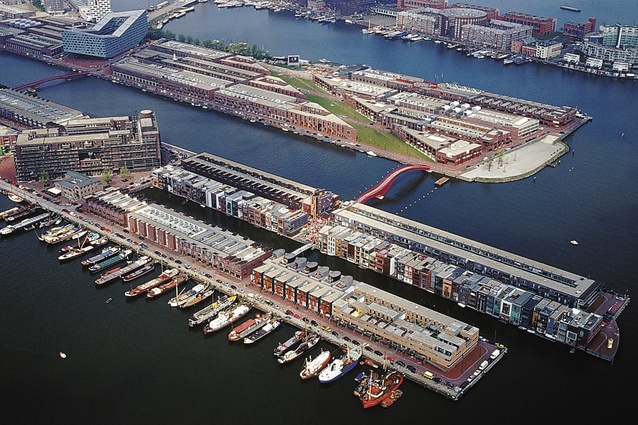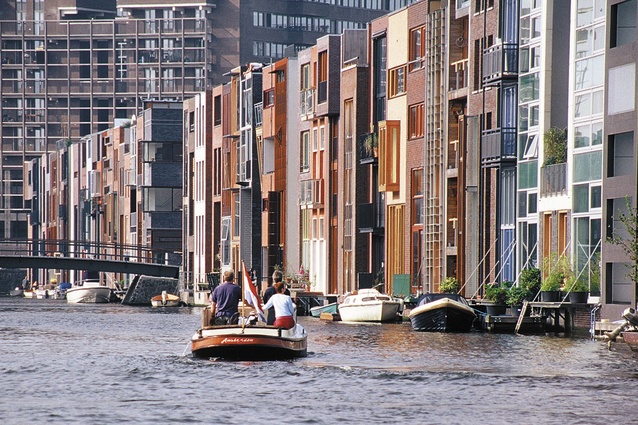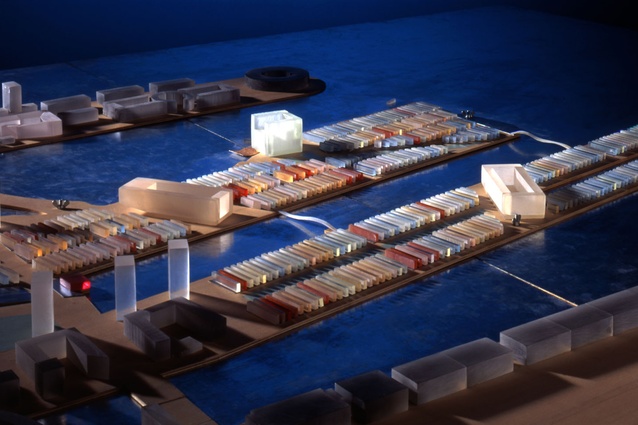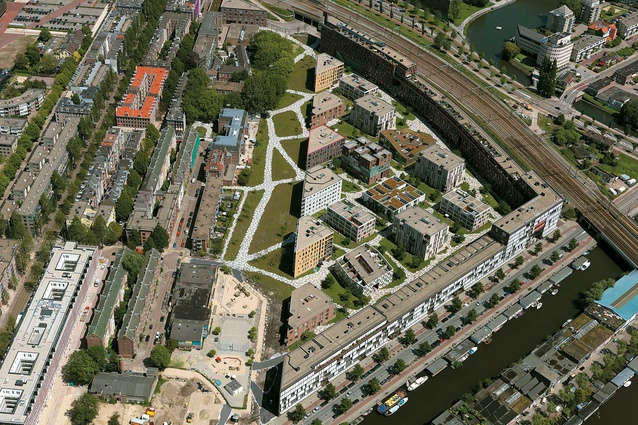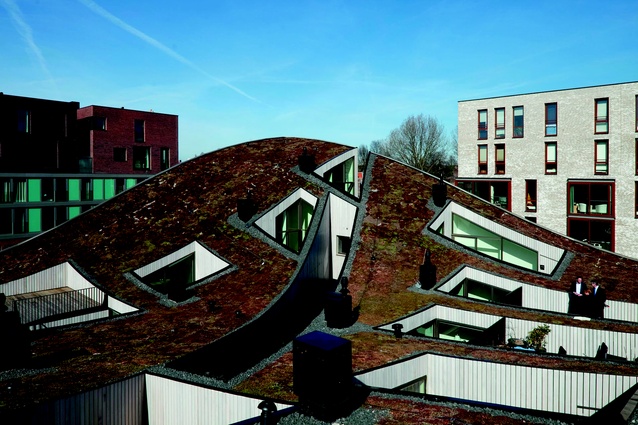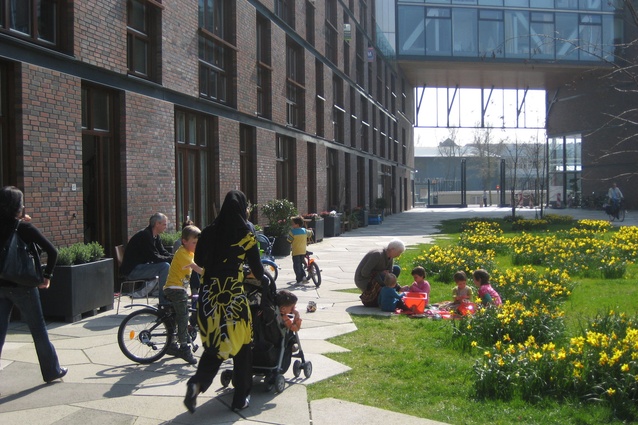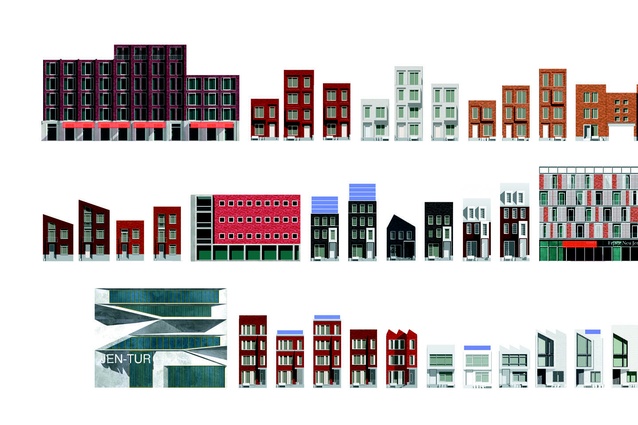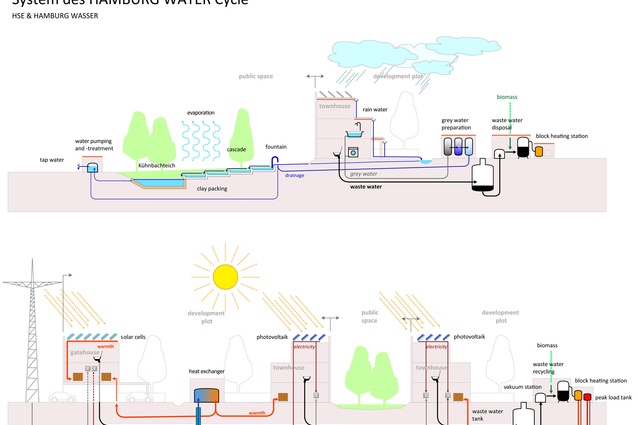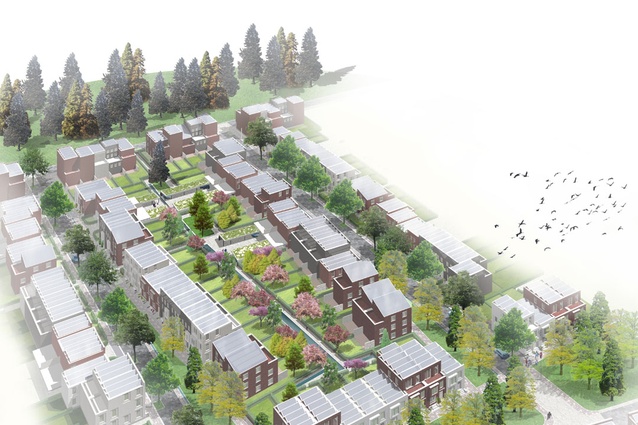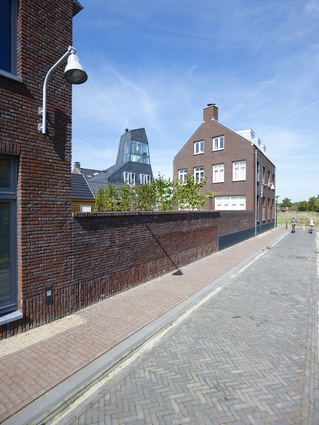From polder to pavlova paradise
As New Zealand’s housing shortage and associated affordability issues become more and more apparent, we take a speculative look at the Netherlands, and some housing typologies that might, in part, provide a level of amenity to supplant the kiwi quarter-acre dream.
Test matches aside, housing is the default topic of conversation in New Zealand – during which the phrase “the largest investment you will make” is never far from people’s lips. We are continually reminded however that the cost of investment is increasing and, as such, becoming unaffordable for the average New Zealander. At over five-times the average income – where anything over three-times is a signifier of unaffordability – New Zealanders spend a greater proportion of their income on housing than any other OECD nation. As a contrast, in the Netherlands tenants spend 25 per cent of their income on housing while owner-occupiers are even better off at an average of 16 per cent of income. Blunt comparisons, while illustrative, do not paint the complete picture. For example, the Netherlands government provides a higher level of direct and indirect subsidy towards the housing sector than does New Zealand’s. However, the Netherlands takes a consensus-based approach to development. This is reinforced by a planning system that defines outcomes rather than mitigates effects and a regulatory and financial system focused on delivery. At its heart is an acknowledgment of the value of design to reconcile competing interests, maximise resource use and realise a profit.
Housing affordability has been on a decline for over a decade in New Zealand yet, until recently, the subject garnered little widespread attention and even less action to find solutions. With the release in March this year of the Productivity Commission’s report on Housing Affordability, much of the focus was narrowly directed towards land supply. The report reads as a principled, rather than evidence-based, objection to so called “smart growth” policies – although the data used by the Commission in their assessment will not be released until the final report. Local Government New Zealand (LGNZ), in their submission to the Commission, did an excellent job of dismantling this assumption. In the process, they outlined the extensive supply of residentially zoned land in each territorial authority, including Queenstown where affordability remains dire, stating in summary:
“Affordable housing (however this is interpreted) has not been solved internationally nor in New Zealand despite many inquiries into the best meaning of affordable housing in the context for New Zealanders. Hence, expecting a single solution, nationwide, in the form of simply recommending uncontrolled land release is naïve and simplistic.”
While the Commission’s report and much of the debate focuses on the supply side of the equation, less attention was paid to the demand side. Among the complexities inherent in a massive housing and development industry, the creation of viable alternatives to existing housing typologies that meet existing and future demand is hugely important. The demand for single family, individually titled, three-four bedroom houses with a garden and car parking will no doubt continue to be the norm. As professions used to wrestling with contradictions and competing interests, urban designers, architects and planners are well placed to offer alternatives that provide the amenity of the Kiwi-dream house in a broader range of typologies while using resources more affordably. While alternatives are important, the elephant in the room tends to be the framework in which projects are delivered. The regulatory and financial structure that delivers projects plays the defining role in our environment. Policy is never neutral, specific outcomes are privileged, by omission or design.
Going Dutch
The Netherlands has long provided a rich source of exciting architecture and urban planning. Usually the focus is on the shiny and new, however the society which makes these projects possible is just as worthy of study. Hospitals and the military are generally known for good evidence-based decision making – issues of life and death, it would seem, tend to provide clarity and focus. In a similar vein, the Netherlands has been forced over its long history to find consensus-built solutions to problems. In a country where over a third of the country is at risk of flooding, an acknowledgment of shared responsibility to address a risk so great has forged a consensus-based approach to government at all levels. Naturally it is not universally popular and, like any approach, has its issues. It has meant however, that land development, environmental protection and efficient resource use is evidence based, widely debated and welcoming to innovation.
The Dutch experience is far removed from New Zealand. Historically, in the Netherlands most land was owned, developed and sold by national or local governments. Housing was developed at scale by private developers and few people were able to build an individual house. Housing was however, generally of a high standard and affordable. Over the last 20 years, the Dutch have introduced a greater flexibility and individual focus to the housing industry that is more relevant to the current context of New Zealand. While introducing market-led reforms, they have retained the benefits associated with building at scale, articulating a clear vision and involving all affected parties. In short, the Dutch plan – in the original sense of the word; opportunities in greenfield and brownfield sites are identified, development options are tested and the affected community is involved early in the process. Rather than lobbing grenades from the sidelines, all parties have a seat at the table. It is a process that invites certainty for communities, developers and the financial institutions involved. Public Private Partnerships are the norm. Over the years this approach has produced a number of interestingly diverse examples. Those that follow include the exciting and well-known as well as projects destined to be comfortable places in which to raise a family, rather than grab the spotlight.
Borneo Sporenburg
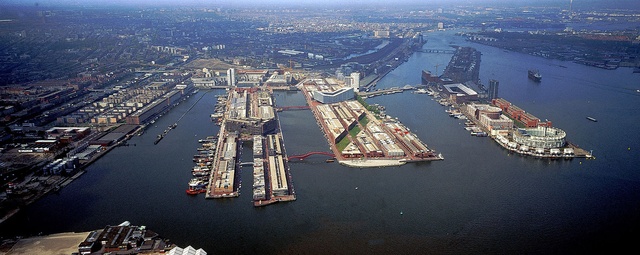
A classic, although far from representative example, is Borneo Sporenburg. Designed in the early 1990s, and completed by the beginning of this century, this project reflected a change in the Dutch approach to housing. Private development of individual plots was encouraged and new typologies for living were developed that retained amenity but increased density. For a country where over 90 per cent of housing was developed by the government or housing corporations, the offering of individual parcels of land was a popular approach and heralded the start of a policy where today most developments offer a proportion of individual plots. Indeed, early examples of the Amsterdam Municipality offering individual plots by lottery saw people camped outside the issuing office to secure their lot.
As is the standard approach in the Netherlands, issues of quality, access, safety and amenity were established first under a masterplan by West 8 and supervised throughout the length of the project. The high visibility, size and inventiveness of Borneo Sporenburg drew wide attention for the then-young firm of West 8 and Adriaan Geuze.
Borneo Sporenburg was the third extension of the eastern expansion of the Amsterdam docklands and called for a density of 100 houses/ha. The Municipality of Amsterdam wanted an urban density while developers and the market wanted suburban typologies – freestanding single housing. This paradox drove the search for new typologies that involved almost 60 architects. The 3–5 bedroom patio house dominates, with 30–50 per cent of each plot a void creating a variety of open space. The 2,300 patios define the architecture of the houses, while most connect to the street and quayside. While the individual houses may make up the bulk of the area, it is the three sculptural apartment blocks – with names like the Sphinx and Whale – along with the eye-catching red bridges, for which the development is known.
Veemarkt
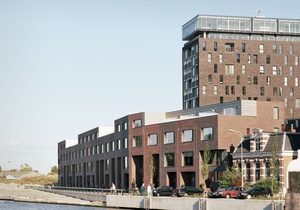
The Veemarkt – or Cattle Market – in Utrecht is a new sustainably driven development of 550 new homes, primary school and small-scale retail. There will be a mix of individually owned, rented and social housing at a density of 50-55 dwellings p/ha. At the design stage, future residents have been offered the option – at their cost but reflecting economies of scale – to combine facilities such as built parking under houses to free up open space. Housing aimed at the ‘starter’ market is a significant component, with a freestanding three-bedroom terraced house with a combination of small garden and a roof terraces costing less than EUR200,000. A single car park is located adjacent but not on site. Two young firms, Stereo Architects from Rotterdam and Zecc from Utrecht have proposed developments for the Veemarkt.
Reflecting a new trend in the Dutch housing market of collective based development, Utrecht’s Zecc proposed a housing project of its own. By illustrating at a high level the possibilities of the site, the architects pitched the project directly to potential home owners while leaving a great deal of flexibility in their plans. As home owners sign up their requirements are incorporated into the development of their own house and collective spaces. Proposing a range of typologies, depending on the final make up of investor/home owners, a total of 20-30 houses will be built on site.
Stereo Architects has designed a three-level terraced house with three bedrooms. A private garden opens to the street while a clever solution for the roof combining the usually mutually exclusive functions of a terrace and solar cells is created. As architect and director Finbarr McComb explains, “By creating a pergola structure the house gets the best of both worlds – maximum area of roof terrace and solar cells”. Rather than being an added extra, the pergola form is integrated into the roof structure providing privacy as well as plenty of voids for light and views out.
Het Funen

At a different scale altogether, ‘Het Funen’ – or Hidden Delights – consists of 500 dwellings set in open space on what was a former parking lot for towed cars in east Amsterdam. A masterplan by Frits van Dongen established a perimeter block around the right angle of a difficult corner site that acts as a barrier to the busy railway line adjacent. A loose grid of 16 housing blocks is laid out within the triangle with a diversity of typologies: live-work units, maisonettes, penthouses, seniors housing, studios and houses specifically design for the disabled. There is a mix of individually owned and rental accommodation. The ground floor of the perimeter block contains commercial space. In this instance a single company – IBC Vastgoed – undertook the entire development. Usually it would be instigated by the city. The maintenance of the park is undertaken by a private firm not the city, however the park remains publicly accessible. NL Architects, a firm known for inventive design, and driven here by a close reading of project constraints, developed one of the 30.5m x 27.7m blocks. The masterplan called for a three-storey block with 50 per cent of the third floor reserved for a roof terrace. NL reinterpreted this to give each of the 10 houses the same volume of 633m3 with the volume evenly distributed. With a back-to-back layout, the houses are accessed from what NL refer to as a “mini canyon” – a laneway cutting diagonally through the block. This canyon rids the façades of the obligatory storage spaces and technical facilities. For a masterplan depicting blocks with no ‘fronts’ or ‘backs’ it is an elegant, if complex, solution. Each house within the block is unique and enjoys maximum openness of each façade. The amplified building heights create a bonus of double-height spaces while the roof terraces remain as voids. It is an approach that may not suit everyone yet the interior layouts afforded by such a strategy proved a popular choice.
Cronenburgh

A recent project in the ‘Green Heart’ of the Netherlands shows another side of the international practice of West8. At Cronenburgh, the firm has created a modestly scaled, well designed project that retains the character of a village while affording high quality housing and open space. The DNA of a typical Dutch Village drove the planning of the 9ha site where traditional buildings have little repetition of typologies. West8 created a framework for development that controlled dwelling height, width, roof pitch and position on the plot. Materials were chosen that would ‘age gracefully’ in the context of the village. The individual design of each dwelling was left to each architect to interpret. The scale and function of the street profiles was retained from the original village, including parking, as was the landscape treatment of the surrounding area.
Gapyong Space Invader

On a different continent, yet with a Dutch architect, a developer-driven project in Korea called the Gapyong Space Invader, by NL Architects, takes a suburban lifestyle at the density of a typical tower block as its starting point. A masterplan directs development of housing types by eight different architects. The premise is simple: stack a single-storey bungalow below and a two-storey apartment above. The units are grouped into clusters of four with a narrow patio inbetween. The lower house is 18m long and 7.5m wide, as akin to a bungalow as it is to a row house. Each house faces three directions with a ‘dark’ service zone on the fourth side. The top house is the same size as the lower house yet is cut two-thirds the length with the remaining third placed on top. This creates four large balconies which are planted with fairly deep soil to accommodate a decent garden. In the words of NL, “apartment becomes house”.

